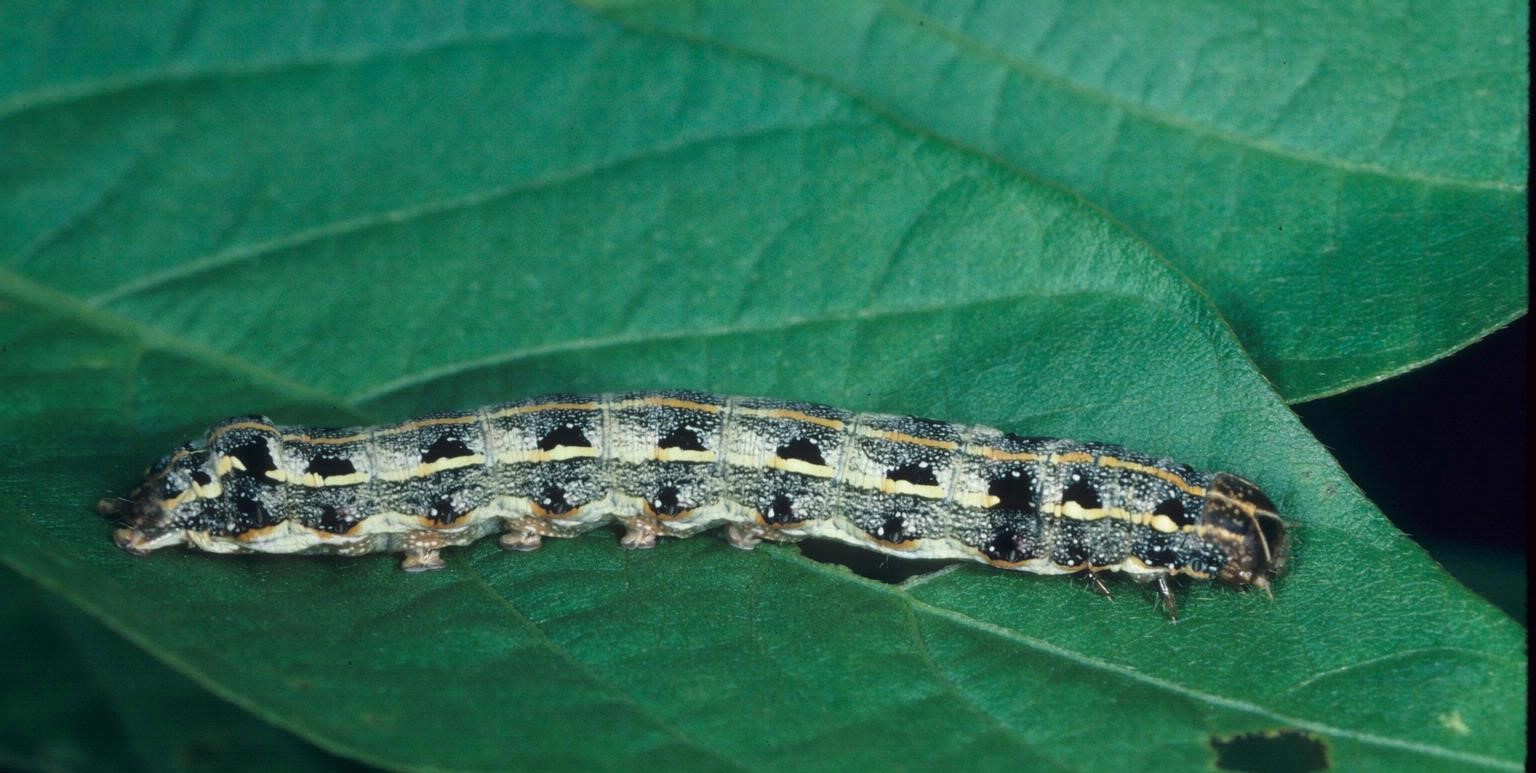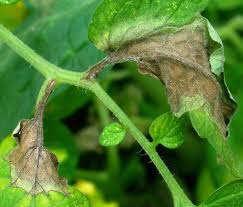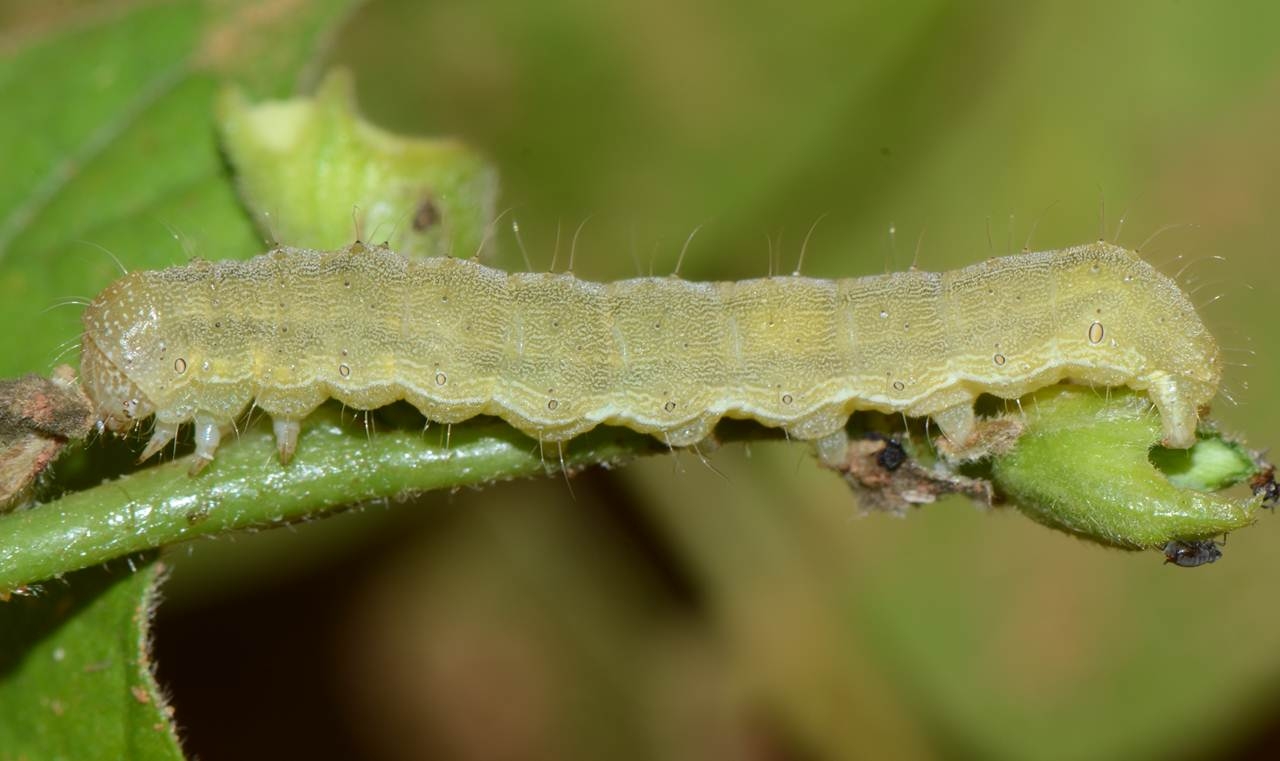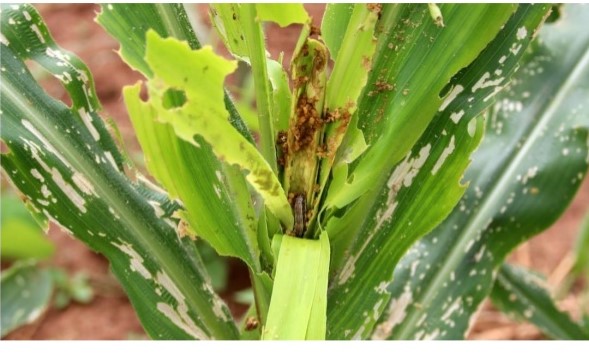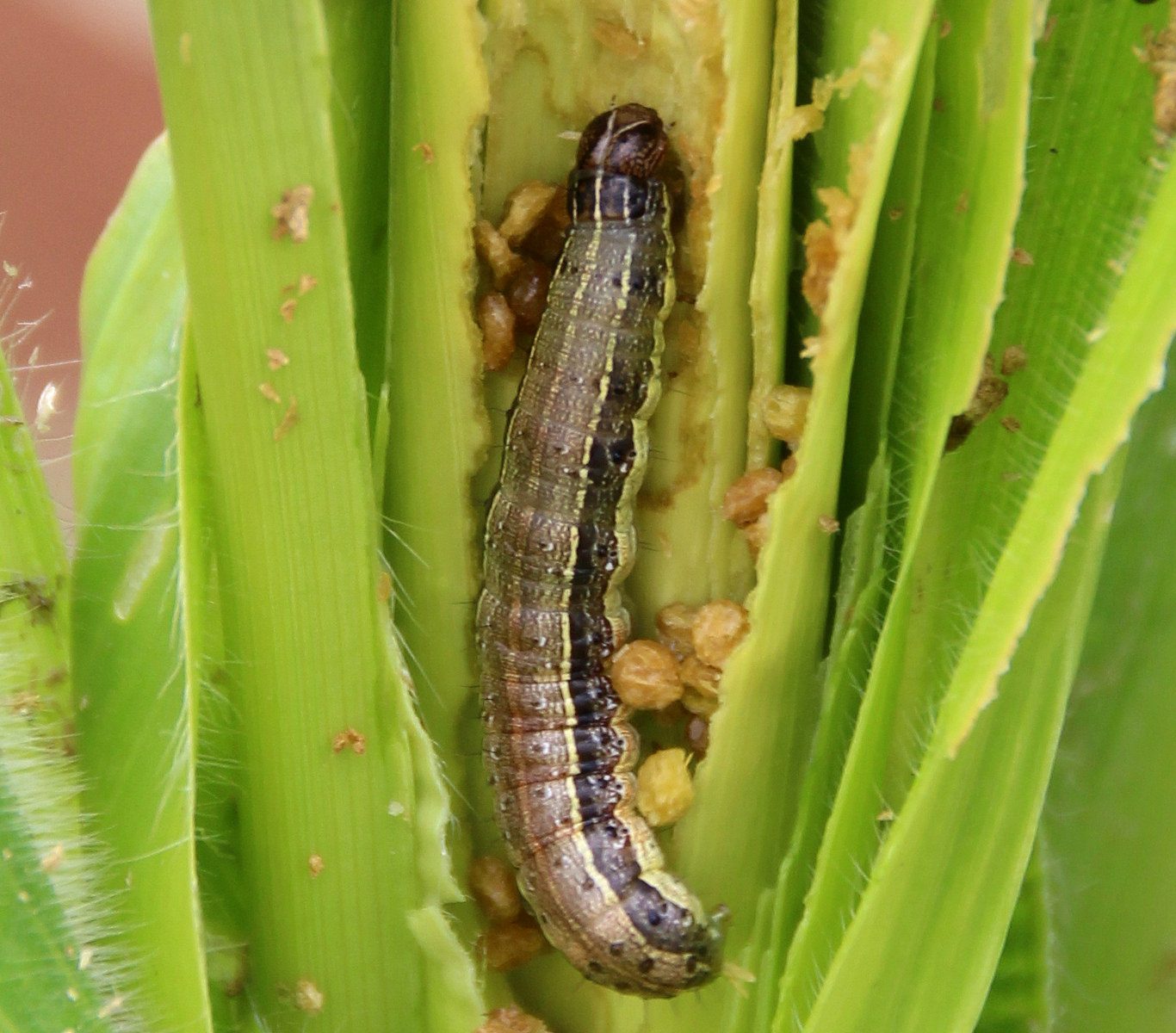The first time the outbreak of this pest in India was seen in the state of Karnataka in July 2018 After this, it has also spread in other states. This pest which is damaging the maize crop remains alive for more time than other insects. The moths of this insect can fly up to 100 km in the same night with the blow of air, a female gives its eggs in the life of 1 to 2 thousand. The reason for the loss is not only their population but also by their feeding habits. These insects attack the crops in the cluster. Because of this, they destroy the entire crop in a short time. This Polyphagous insect damage about 80 types of crops but it’s preferred host in maize.
- Fall armyworm generally feeds on foliage, but during heavy infestations, larvae will also feed on corn ears.
- Foliar damage to corn is usually characterized by ragged feeding and moist sawdust-like frass near the whorl and upper leaves of the plant.
- They will frequently be near the tip but may feed down the ear creating a track of damaged kernels.
Like and share with other farmers by clicking on button below.
Share

